
October
Plant spring bulbs
Fertilize existing bulbs
Store tender bulbs
Winterize
Fruit, Vegetable,
and Herb Care
Autumn harvest
Clean up for winter
Fertilize trees and shrubs
Monitor water needs
Autumn planting choices
Winter pests
Prepare containers
Move houseplants inside
Fertilize the lawn
Keep mowing
Help the environment

October’s falling leaves signal a major transition for Chicago-area gardeners. Although daytime temperatures may be pleasant and even balmy this month, autumn’s hard frost is on the way—and outdoor tasks are often dictated by its arrival. Cleanup and maintenance chores take a starring role in advance of winter. Although our gardens are bidding farewell to the last of the season’s flowers, October is a great time to plant spring-blooming bulbs in anticipation of next year’s growing season.

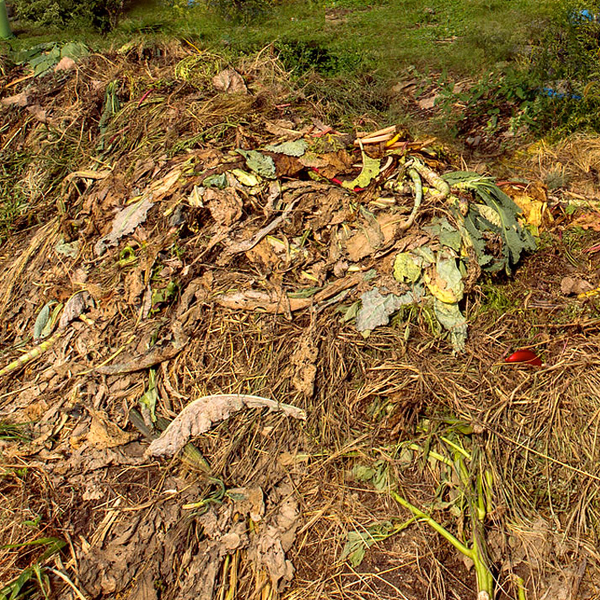
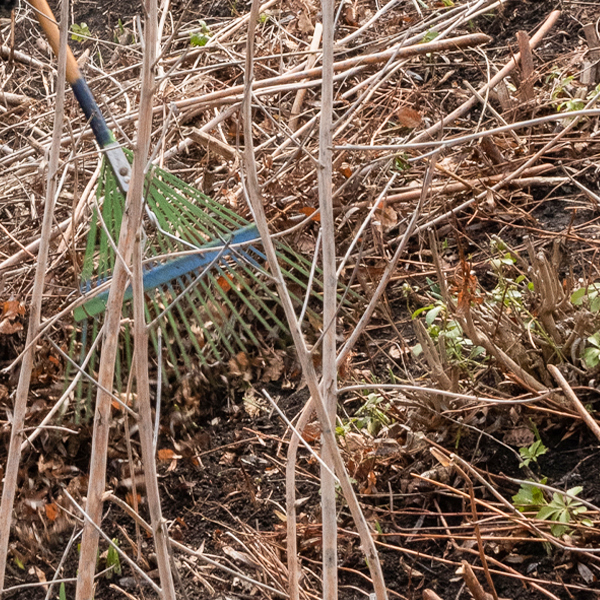
Garden To-Do List
Plant spring bulbs
Fall is prime time for planting spring-blooming bulbs. Consider adding new varieties to the yard and bulbs that are timed to successively bloom from early to late spring.
Begin garden cleanup
As leaves fall and plants die back, it’s a good time to clean up the yard in anticipation of the coming winter weather.
- Excess fallen leaves can be shredded and kept aside to use as mulch for perennial and garden beds in November, after the ground has frozen hard. Mulch helps regulate soil temperatures and protects plants from extreme temperature swings.
- Remove annual plants from garden beds and containers before a killing frost.
Clean containers well before storing over winter.
Feed compost heaps
Keep your compost pile active by adding layers of green material (e.g., grass clippings and spent annuals or perennials) and brown dried material (fallen leaves, shredded twigs, and dried grasses).
- Amend the pile with small amounts of soil, fertilizer, and moisture.
- Turn it regularly.
Keep diseased plant material out of the pile.
Take winter precautions now
If rabbits or rodents have created problems in previous seasons by overwintering in the garden, cut down their winter habitats, such as ornamental grass clumps or tall perennials.
Annual and Perennial Care
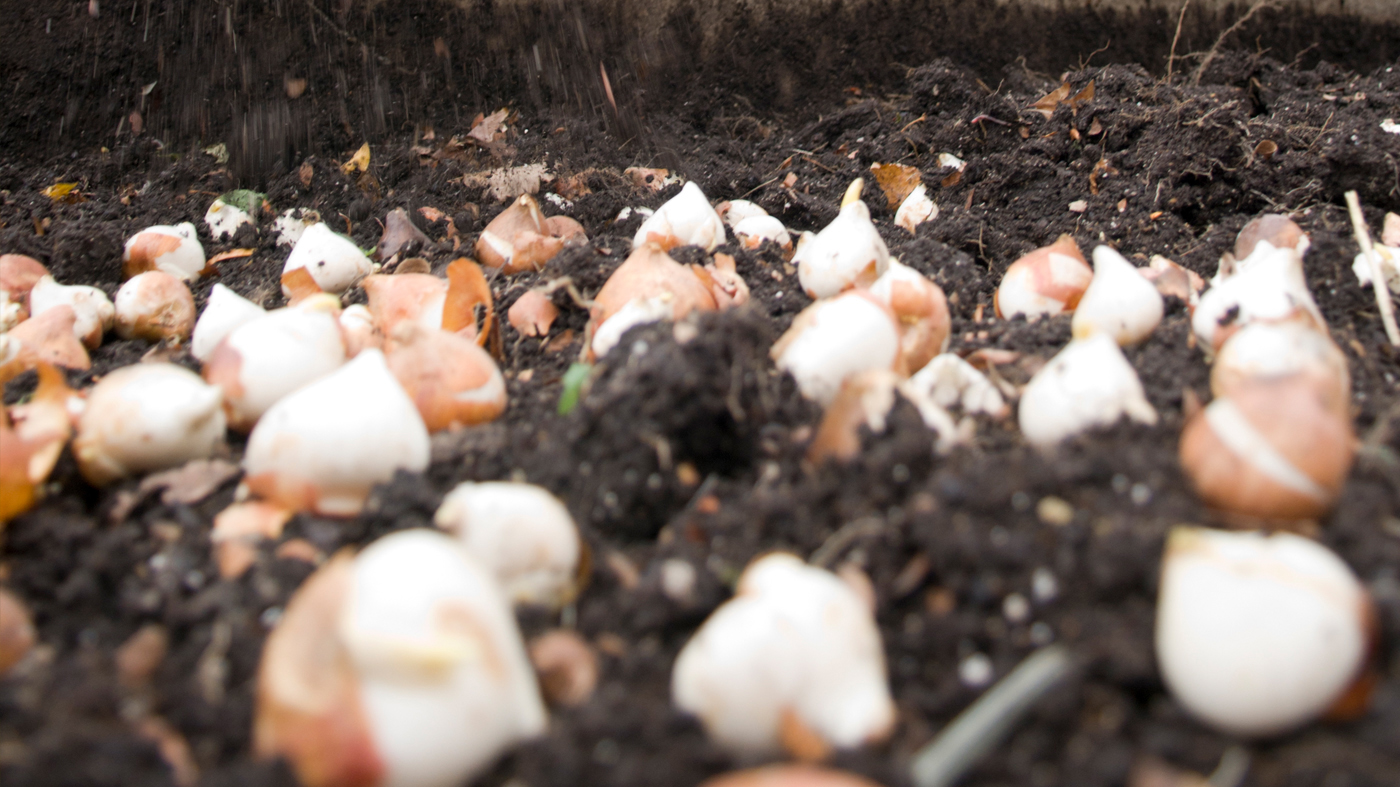
Plant spring bulbs
Gardeners can start planting spring-blooming bulbs this month and even into November, provided the ground has not yet frozen. Choose a sunny, well-drained area and plant your bulbs two to three times as deep as the height of the bulb.
- If the soil is heavy clay, add compost, such as composted leaf mold.
- Sprinkle a slow-release granular fertilizer formulated for bulbs into the top layer of soil above the planting hole. Water the area well.
- After planting, add a layer of lightweight mulch to delay soil from freezing early. This gives bulbs time to develop a strong root system.
- If planting a large bed of bulbs, dig all the soil first, arrange the bulbs, and backfill with soil.
- If rodents, deer, or rabbits have been a problem in the past, consider planting varieties of the following pest-resistant bulbs: daffodils (Narcissus spp.), fritillary (Fritillaria spp.), grape hyacinth (Muscari armeniacum), ornamental onion (Allium spp.), and winter aconite (Eranthis hyemalis).
Fertilize existing bulbs
Apply a slow-release bulb booster-type fertilizer into the top layer of soil above existing clumps of spring-blooming bulbs. This will help the bulbs produce vigorous growth next spring.
Store tender bulbs
A few weeks after a killing frost, lift and store tender summer- and fall-blooming bulbs. This might be as late as November.

- Cut back above-ground foliage and stems of cannas (Canna spp.), dahlias (Dahlia spp.), and tuberous begonias (Begonia x tuberhybrida) to 4 to 5 inches. Gently lift up tubers using a pitchfork. Shake off excess soil.
- Dry out tubers in a warm, dry place. Don’t separate the mass of tuberous roots until they have completely dried.
- Place dried tubers, spaced to allow for adequate air circulation, in labeled cardboard boxes lined with newspaper and filled with barely moist wood shavings, peat moss, or vermiculite. Store between 40 and 55 degrees Fahrenheit in a darkened room.
- Check tubers periodically over the winter and spring: If they begin to dry out, sprinkle them gently with water. Discard any rotted tubers. Dry out tubers in a warm, dry place. Don’t separate the mass of tuberous roots until they have completely dried.
- Gladioli (Gladiolus spp.) corms require cooler temperatures between 35 and 45 degrees. Store in paper bags or open-weave mesh bags.
- Tuberose (Polianthes tuberosa spp.), after being dug up and its foliage removed, can be stored in a pot with very dry soil in a darkened, warm room. Those planted in containers can be moved straight to storage after cutting back the darkened foliage and stems.
Winterize aquatic gardens and ponds
Hardy water plants may remain in small ponds. Keep in mind that if the water freezes, some plants may not survive.
Remove tropical water plants, cut off all foliage and flowers, and store tubers in a bucket or container filled with moist sand. Store container at 55 degrees.
Lawn Care
Tree and Shrub Care
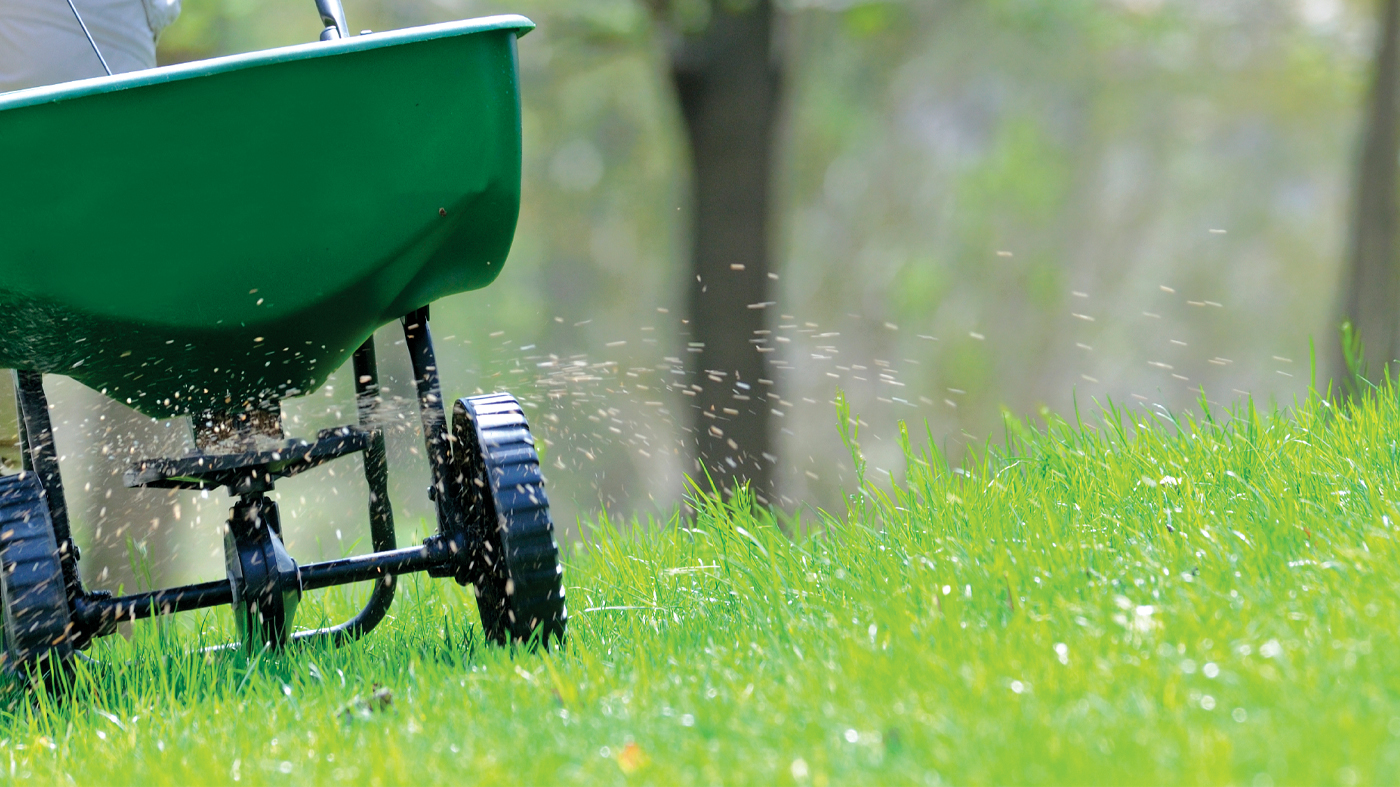
Fertilize the lawn
If not done in September, fertilize lawns with a slow-release fertilizer formulated for turf. (Note that the final application of high-nitrogen winterizer lawn fertilizer is usually applied in mid-November, about one week after the final mowing of the season and before a hard freeze. This late treatment helps grass roots store nutrients over the winter.)
Keep mowing
Continue to mow lawns at 2½ to 3 inches. Grass clippings may be added directly to a compost heap, but avoid adding soaking-wet clippings to compost.
Fruit, Vegetable, and Herb Care
Keep up with the autumn harvest
Continue to harvest vegetables as they ripen. Be prepared to act swiftly when a hard frost threatens:
- Pick all tomatoes, including the unripe ones. Place green tomatoes in paper bags and keep them in a cool spot such as the basement. Check daily for ripeness.
- Harvest pumpkins before a killing frost.
- Cut back any remaining herbs and bring them indoors to use fresh. Alternatively, dry them or freeze in small batches in an ice cube tray for later use.
- Protect tender plants from light nighttime freezes by covering them with sheets or upturned bushel baskets.
- Apply a heavy mulch over cold-hardy crops, such as beets, carrots, Jerusalem artichokes, leeks, and turnips to continue the harvest into early winter.
Clean up for winter
After a hard frost, remove all dead plant material from the vegetable garden and discard or compost. Maintain proper sanitation throughout the entire garden area.
- Turn 1 to 2 inches of organic material, composted manure, or shredded leaf mold into garden soil.
- Remove all fallen fruit from the garden and yard.
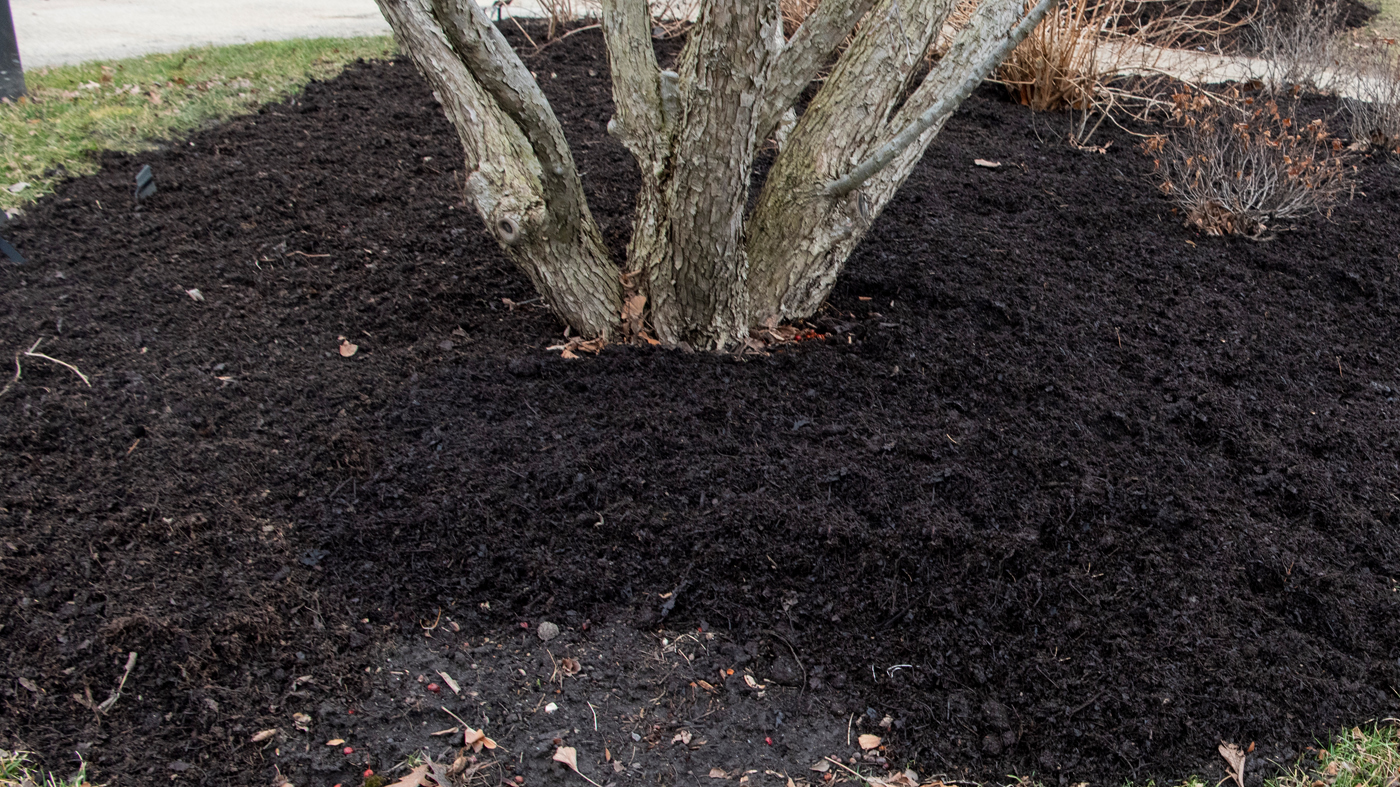
Fertilize trees and shrubs
Consider applying fertilizer this month to trees or shrubs that have not received any fertilizer this year and/or have demonstrated need—for example, stunted growth, failure to fully flower or leaf out, undersized fruit, off-color foliage, recovery from disease, or insect attack.
Monitor water needs
Continue to water trees and shrubs, especially evergreens, up until the ground freezes. Milder temperatures can fool gardeners into thinking woody plants don’t require as much moisture in fall as they do in summer.
Autumn planting choices
Many deciduous trees and shrubs can be planted when they demonstrate fall color or drop their leaves. This indicates they are initiating dormancy.
- Water new plantings well.
- Mulch with 2 to 3 inches of shredded bark.
- Do not fertilize newly planted trees or shrubs. Wait one year before applying a balanced, slow-release fertilizer for woody plants.
Note that certain tree and shrub varieties are better planted in spring, among them American hophornbeam (Ostrya virginiana), bald cypress (Taxodium distichum), Cornelian cherry dogwood (Cornus mas), and swamp white oak (Quercus bicolor).
Protect trees and shrubs from winter pests
If rabbits, rodents, or deer have been a problem in past winters, take precautions with valuable woody plants now.
- To keep deer from rubbing antlers on tree trunks, spread garden netting or snow fencing around vulnerable trees. Physical barriers can be more effective than sprays.
- Protect tree trunks from gnawing rabbits by setting up 12 to 16 inches of fine-mesh hardware cloth tacked into the soil about 3 inches away from the trunk.
Outdoor Container Care
Indoor Plant Care

Prepare containers for overwintering
- Consider most container plants as annuals, since it may be too difficult to overwinter them in their containers without greenhouse conditions. At the end of the growing season, discard or compost annuals.
- Miniature evergreens, low-growing perennials, or groundcovers may survive in troughs if they are heavily mulched.
- Potting soil from window boxes or containers can be discarded or stored for later use, provided there were no signs of disease.
- Thoroughly clean containers that will be stored in a basement or garage.
- Cover permanent outdoor containers that are too large or heavy to move indoors. This will help keep their interiors dry and prevent them from freezing.

Move houseplants inside
Houseplants should be gradually acclimated to indoor conditions and brought inside before the Chicago area’s first hard frost.
- Monitor all plants carefully for insects or disease before bringing them inside.
- Discard seriously diseased plants.
- Sequester plants brought indoors from those that grow inside year-round to prevent disease or insect contamination.
October is a great month to …
use fall leaves to help the environment
After you rake all those fallen autumn leaves, put them to work! Shredded leaves can play many important roles—helping insects overwinter, feeding the soil, and/or enriching a compost pile.

